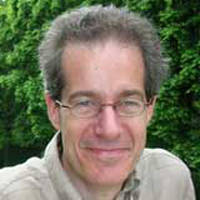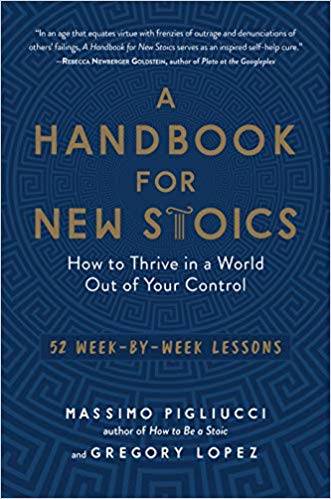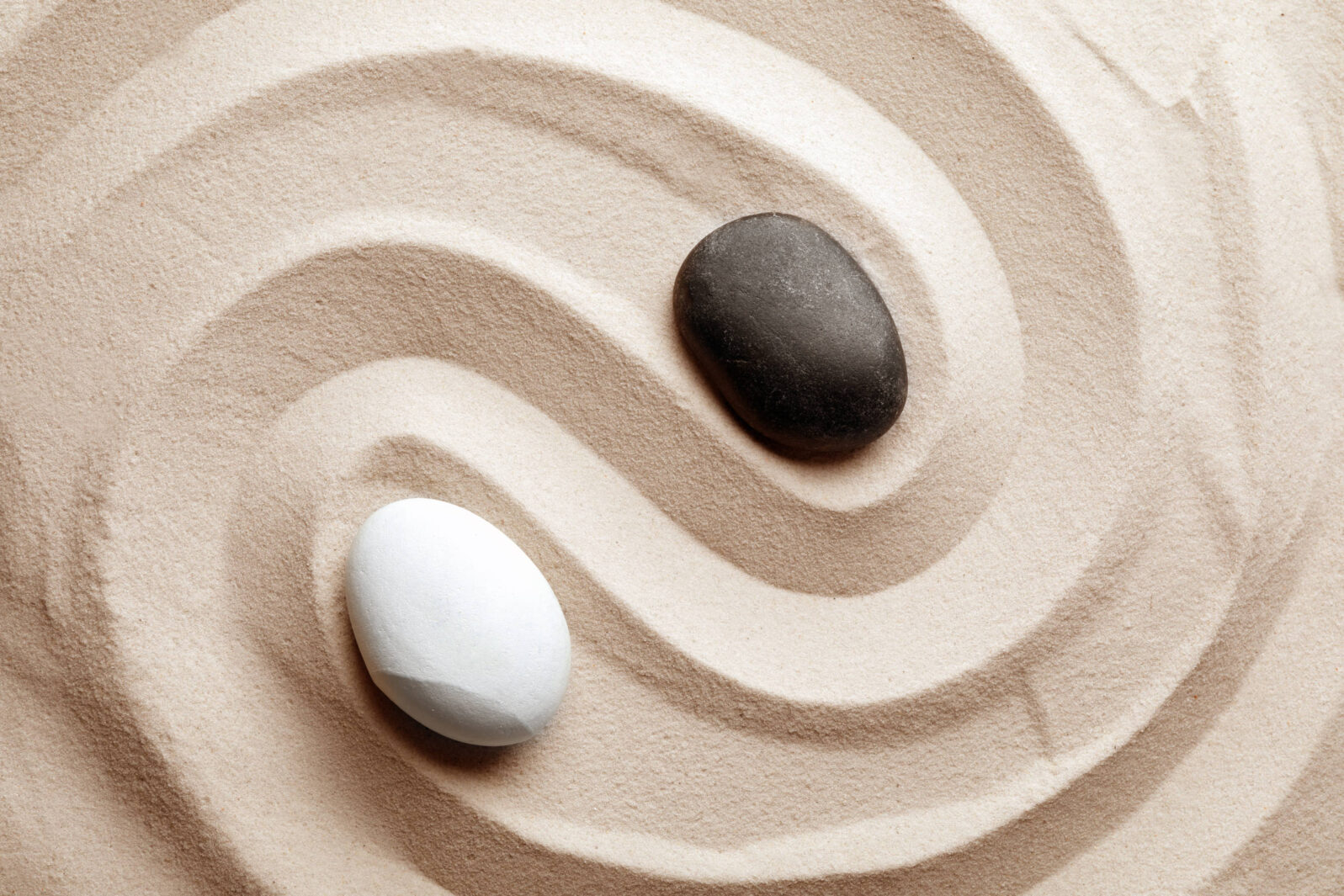Yes, Consciousness Is Real But That’s Not the Half of It
Philosopher Massimo Pigliucci ends up skating deftly around the main problems
Philosophy professor Massimo Pigliucci (left) is the author of a number of books, including A Handbook for New Stoics: How to Thrive in a World Out of Your Control (2019), co-authored with Gregory Lopez. He faces a dilemma.
He doesn’t like the idea that consciousness is an “illusion” but he also doesn’t like the suggestion that there is more to reality than just plain matter. His views on the subject, in a recent essay at Aeon, end up skating deftly around the main problems.
On the one hand, he disparages the “highly fashionable” tendency to label consciousness as an illusion because he thinks that it causes many people to think that science has shown that our view of our mental life is “drastically mistaken.” In fact, he contends, we are a highly evolved animal species that can “deliberately reflect on our experiences.”
However, without making clear how such an astounding reality came about, he is quite clear that consciousness is a purely natural, evolved physical phenomenon. And any other view is “antiscientific”:
Here is where the fundamental divide in philosophy of mind occurs, between ‘dualists’ and ‘illusionists’. Both camps agree that there is more to consciousness than the access aspect and, moreover, that phenomenal consciousness seems to have nonphysical properties (the ‘what is it like’ thing). From there, one can go in two very different directions: the scientific horn of the dilemma, attempting to explain how science might provide us with a satisfactory account of phenomenal consciousness, as Frankish does; or the antiscientific horn, claiming that phenomenal consciousness is squarely outside the domain of competence of science, as David Chalmers has been arguing for most of his career, for instance in his book The Conscious Mind (1996).
By embracing the antiscientific position, Chalmers & co are forced to go dualist. Dualism is the notion that physical and mental phenomena are somehow irreconcilable, two different kinds of beasts, so to speak. Classically, dualism concerns substances: according to René Descartes, the body is made of physical stuff (in Latin, res extensa), while the mind is made of mental stuff (in Latin, res cogitans). Nowadays, thanks to our advances in both physics and biology, nobody takes substance dualism seriously anymore. The alternative is something called property dualism, which acknowledges that everything – body and mind – is made of the same basic stuff (quarks and so forth), but that this stuff somehow (notice the vagueness here) changes when things get organised into brains and special properties appear that are nowhere else to be found in the material world.
Massimo Pigliucci, “Consciousness is real” at Aeon
The ‘illusionists’, by contrast, take the scientific route, accepting physicalism (or materialism, or some other similar ‘ism’), meaning that they think – with modern science – not only that everything is made of the same basic kind of stuff, but that there are no special barriers separating physical from mental phenomena. However, since these people agree with the dualists that phenomenal consciousness seems to be spooky, the only option open to them seems to be that of denying the existence of whatever appears not to be physical. Hence the notion that phenomenal consciousness is a kind of illusion.
Pigliucci seems to hope to set matters right by arguing more subtly for hard core naturalism (materialism):
Similarly with all mental phenomena, including both access and phenomenal consciousness. Even though there is nothing spooky about it (bye-bye to any form of dualism), specific numbers and arrangements of neurons seem not to be sufficient to generate those phenomena. The involved neurons also need to be made of (and produce) the right stuff: it is not just how they are arranged in the brain that does the trick, it also takes certain specific physical and chemical properties that carbon-based cells have, silicon-based alternatives might or might not have (it’s an open empirical question), and cardboard, say, definitely doesn’t have.
Massimo Pigliucci, “Consciousness is real” at Aeon
Reading his essay helps us recall the problems with naturalism:

First, the fact that we are even asking these questions sets us quite apart from all and any of the innumerable life forms that have come to exist on Earth over billions of years. There is no reason to believe that “we have to thank billions of years of evolution by entirely mindless natural selection for these causally efficacious representations,” as Pigliucci claims. Human-like consciousness did not happen to any other life form and we cannot produce it in any of them. His claims are a mere statement of faith in “mindless natural selection,” marketed via fellow naturalists to the public at large as a finding of science.
For the difference human consciousness makes to us, see Michael Egnor’s “The real reason why only human beings speak.”
Second, we have no clear idea what consciousness even is, never mind that we have no idea how or whether it “evolves.” The field of consciousness studies seems divided between those who maintain that consciousness is an evolved illusion, those who think that you and your coffee mug are both conscious and/or that consciousness is a material thing or that the whole universe is conscious. The field has been described in the Chronicle of Higher Education as bizarre. It’s hard to see how Pigliucci’s minor quibbles with other naturalists provide any important insight into the mess.
Third, as Michael Egnor points out, there is one important sense in which our consciousness is an illusion: “we are aware of none of the processes by which we think, not in any primary way. We are aware only of the objects to which they point.” But that’s only the same situation as this: Most of us don’t really know how our smartphones work. But those text messages are not illusions. Neither is our ability to read, understand, and act on them. Pigliucci agrees with all that but seems to want to ride it thundering down a road to nowhere.
And lastly, Pigliucci insists, without offering evidence, that dualism is “antiscientific.” Dualism is a logical conclusion from our circumstances; we are beings of both mind and matter. And those who would refute dualism tend to involve themselves in stranger claims, as we have seen.
Michael Egnor approaches the issues from the hylemorphic (dualist) perspective:
From the hylemorphic perspective—the one I take—matter and spirit interact in the same sense that matter and form interact. Form is the organizational principle–the intelligible principle–behind the thing. Matter is what individuates something. Form is what makes it real rather than potential. Form determines the properties of matter.
A simple example from chemistry will help: It is the property of certain things to exist as mirror images of each other; my right and left hand are an obvious example. From the standpoint of matter, my hands are identical. They have the same bones, muscles and nerves. What makes them different is their form. My right hand is a mirror image of my left hand. That is, it is the form alone—the organization of my hand—that makes the difference, rather than the matter of which my hand (right or left) is composed.
Chirality is a property of asymmetry. The same chirality exists in many molecules and chirality plays an essential role in biochemistry. Most biomolecules are chiral, and the function of biomolecules is tightly linked to their chirality. “Right-handed” glucose is metabolized by the body. “Left handed” glucose is not.
The difference between the smell of oranges and of lemons is due to chirality. The molecule—limonene—smells like lemon or orange according to its chirality alone—to its form, not to its matter.
Michael Egnor, “How can mind interact with matter” at Mind Matters News
Dr. Egnor acknowledges that the analogy of chirality in understanding “form” does not solve all the problems associated with mind-matter interactions. But it does show that immaterial facts have “the power to determine the powers of material substances.”
Those who would understand immaterial realities like consciousness should not speak so disrespectfully of dualism as Dr. Pigliucci does.
See also: How can mind interact with matter?
